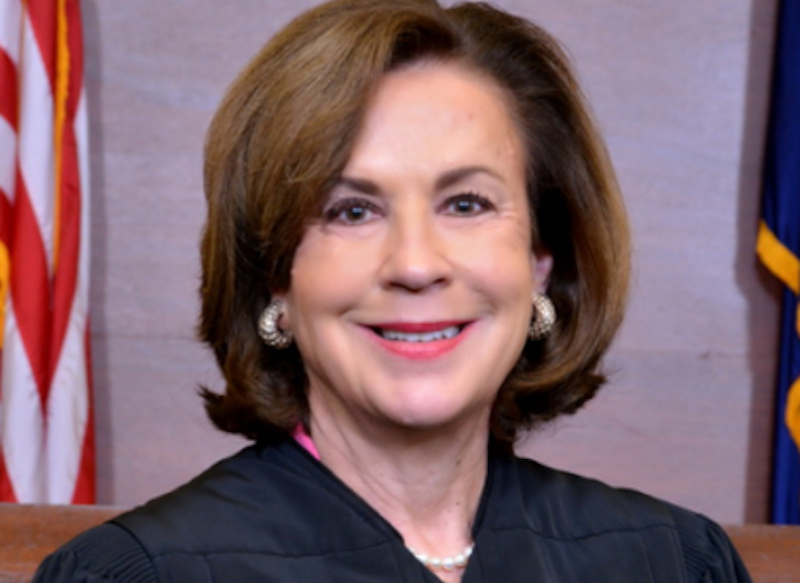Letter to the Editor: Understanding the variety of judicial elections in Missouri

I recently received a sample ballot in the mail for the upcoming general election. I couldn’t believe how long it was – statewide and local candidates, state constitutional and statutory amendments, local propositions, and judicial candidates.
People often tell me they are confused about voting on the judges on their ballots. I understand their confusion, because which judges are on your ballot depends on where you live. That is because Missouri’s constitution provides for two types of judicial selection and two ways for Missourians to express their votes about judges.
I always respond by reminding them how important it is TO vote on their judges, no matter how far down the ballot they might be. Unless we are involved in one of the thousands of legal disputes filed in our courts every year, we often don’t think about judges. And except for the relatively few cases that make headlines in the media, we often don’t hear about judges. Even when we do, it is confusing because the media may focus more on politics or policy surrounding the case rather than the legal issues actually raised in the case, which many people might find to be too much “inside baseball.”
How are judges selected in Missouri?
As I travel to various parts of our state, people often ask me to explain Missouri’s method of selecting judges. In a nutshell, I tell them this: Back in the 1930s, the public became concerned about the increasing role of politics, money and outside influence in judicial selection and judicial decision-making. There was public backlash against widespread abuses of the judicial system by the “Boss Tom” Pendergast political machine in Kansas City and the political control exhibited by ward bosses in St. Louis.
So, Missourians placed the “Nonpartisan Selection of Judges Court Plan” on the ballot by initiative petition and, in November 1940, voters successfully amended the Missouri Constitution. The plan provides for the nonpartisan selection of certain judges based on merit. Initially, the nonpartisan plan applied to judges of the state Supreme Court, court of appeals, and the circuit courts in Jackson County and St. Louis city. The constitution gives other counties the option to vote whether to use nonpartisan merit selection rather than partisan elections for their local judges. Since 1940, four counties have decided to exercise this option – Clay, Platte and St. Louis counties in the early 1970s, and Greene County in 2008.
How do those selection processes work, and how are voters involved?
In most Missouri’s counties – where voters have a better opportunity to get to know their judicial candidates personally – candidates for associate circuit judge and circuit judge run for election under a party label. It is not uncommon for these judicial races to be uncontested, especially at the general election.
But in Clay, Greene, Jackson, Platte and St. Louis counties, the city of St. Louis, the court of appeals, and the state supreme court, judges are nominated and appointed through nonpartisan selection and face the voters in “yes-or-no” retention elections.
When there is a vacancy on one of these courts, candidates complete a detailed application, including their legal experience and community service. Then members of a nonpartisan judicial commission review those applications and interview candidates. For appellate vacancies, there is an Appellate Judicial Commission, made up of three members of the general public appointed by the governor; three lawyers elected by local lawyers in each of the three appellate districts; and the chief justice. Each county – and St. Louis city – has its own nonpartisan judicial commission made up of two local members of the public appointed by the governor, two lawyers elected by other local lawyers, and the chief judge of the local appellate district. After public interviews, the commission chooses three well-qualified candidates for the vacancy, and the governor selects one of the nominees to be the new judge.
Voters have the final say in the nonpartisan process. Once the new judge has been in office for at least a year, the judge appears on the next general election ballot. For each of these judges, voters are asked whether to retain – or keep – the judge in office for a full term (four years for associate circuit judges, six years for circuit judges, and 12 years for appellate and Supreme Court judges). You vote by choosing “yes” or “no” on your ballot. For each additional term, a judge must seek voter approval again. If a judge is not retained, then the judge leaves office at the end of December, and the process starts over.
Where do voters find judicial elections on their ballots?
If you live in a county where your local judges are elected in partisan elections, you may find your circuit judge candidates listed on your ballot after other state-level elections (e.g., state senator and state representative) and your associate circuit judge candidates listed on your ballot after other county-level elections (e.g., county commissioner).
The section listing judges from the Supreme Court of Missouri and Missouri Court of Appeals may be labeled as the “official judicial ballot.” If you live in one of the six nonpartisan jurisdictions, this portion of your ballot also will include local circuit and associate circuit judges. For each nonpartisan judge listed, you will be asked whether to retain (keep) the judge in office, and you vote by choosing “yes” or “no.”
How do voters learn more about judicial candidates?
I am often asked how someone can find more information about judges on the nonpartisan ballot.
First, you can find lots of information on the Missouri Courts website. You can learn more about the qualifications and experience of judges on the Supreme Court and all three districts of the appeals court: the Eastern District, the Southern District and the Western District. You also can read their appellate opinions online. You can find biographical information for associate and circuit judges in Greene County, Jackson County, St. Louis County and St. Louis city on their local court websites.
Second, just like in many occupations, nonpartisan judges have performance reviews. A statewide committee made up of members of the general public, lawyers and retired judges reviews the judicial performance of nonpartisan judges who will be on each retention ballot, using surveys of jurors (for judges assigned to cases that have had jury trials) and attorneys and a variety of the judges’ written opinions. Ultimately, the committee determines whether a judge substantially meets overall judicial performance standards. You can find information about all the judges on the nonpartisan retention ballots and samples of their decisions from https://yourmissourijudges.org/reviews/.
How are judicial candidates different from those for other offices?
It often surprises people when I tell them how judges are different from other candidates for public office. We want to know how executive or legislative branch officials stand on broad policy issues because we want them to set and carry out those policies. But judges decide each individual case before them based on the evidence presented and the law. Under our ethical code, judges must remain neutral – we don’t want them to make any decisions about the outcome of a case until all the sides in it have a chance to present the facts and legal arguments.
The only real promise any judge can make to voters is much like the one jurors make: to set aside their personal viewpoints, to remain fair and impartial, to consider only the facts presented as evidence in court, and to follow the laws in our constitution and statutes in deciding cases. If judicial candidates announce a position on an issue, our ethics rules may require them to remove themselves from hearing cases about that issue. This is why information you have seen about these candidates probably focuses on their background and experience.
There is an additional, more strict rule for nonpartisan judges – under the state constitution, they cannot campaign at all! This means no yard signs, mailers or advertisements. So how are you supposed to know anything about them?
Under our American rule of law, no person (or judge or other government official) is above the law. Under the rule of law, judges cannot simply follow their own personal viewpoints or even the will of the majority. Instead, they must do their best every day to judge in accordance with the constitution and laws. So as voters, it is important we learn about each judicial candidate’s character, temperament and range of experience so we can feel confident about the votes we cast at the ballot box.
Voting is a privilege and responsibility. So despite the length of your ballot, please take the time to learn about all the people and issues on your ballot, and take the time to complete the whole ballot when voting. Make your vote count.
Mary R. Russell
Chief Justice
Supreme Court of Missouri
Jefferson City, Missouri
Miss Clipping Out Stories to Save for Later?
Click the Purchase Story button below to order a print of this story. We will print it for you on matte photo paper to keep forever.

